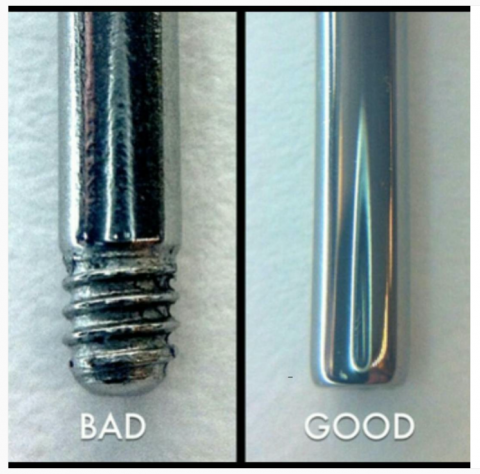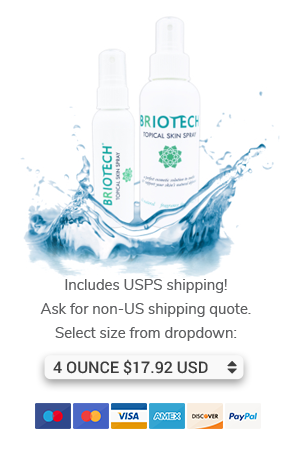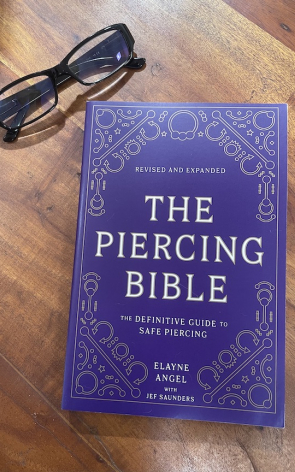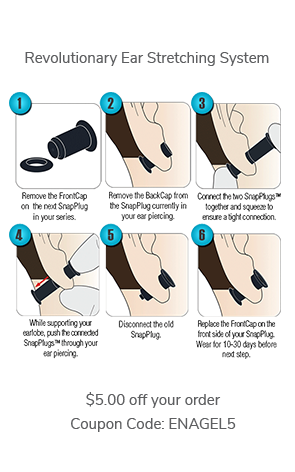In addition to being the author of The Piercing Bible, I am also a monthly contributor to a body art industry trade publication called Pain Magazine; I write a question-and-answer column. Piercers ask questions on a wide variety of topics, and I provide my thoughts, opinions, and relevant facts, when available. While this article was written with piercers in mind, it contains a LOT of information that would be great for consumers to have about body jewelry.
Dear Angel,
I know you say that internally threaded jewelry is best, but it is so much more expensive than what I use. For sure the external stuff from China isn’t the best, but it is supposed to be made of 316L stainless steel, so that’s good, right? I want to stay competitive but I’m kinda torn because I want to be the best piercer I can. Most of the piercings I do seem to heal out okay. Does it really matter that much?
Thanks for your help, A.
Dear A.,
I’m glad you asked. Because the answer, in a word, is yes; it does matter. Possibly without exception, inexpensive imported body jewelry is not only cheap in price, but also downright poor in quality. In addition to the threading style, several other critical factors contribute to whether body jewelry is optimal including material, finish, and machining.
When I began piercing professionally in the 1980s, the best body jewelry available had not yet achieved the standards maintained by the top producers in the market today. Based on experience, sI have absolutely no doubt that piercings heal better with the implant-certified metals and mirror finishes that are now readily accessible.
The Association of Professional Piercers (APP) minimum jewelry standards for initial piercings[i]were established following extensive research. Below are the current standards, which were adopted in 2009 and updated in April of 2017 to include rose gold:
- Steel that is ASTM F138[ii] compliant or ISO 5832-1[iii] compliant
- Steel that is ISO 10993-6, 10993-10, and/or 10993-11 compliant
[Note: The EEC Nickel Directive[iv] is a regulation that requires a low rate of nickel release for all materials used for costume or fine jewelry, belt buckles, watches, or other metallic accessories with direct skin contact. It does not specify nor prove that a material is safe to wear in the body; therefore, compliance with this directive alone is not sufficient for meeting the APP initial jewelry standards.] - Titanium (Ti6Al4V ELI) that is ASTM F136[v] compliant or ISO 5832-3[vi] compliant
- Titanium that is ASTM F67[vii] compliant
- Solid 14 karat or higher nickel and cadmium free yellow, white, or rose gold
- Solid nickel-free platinum alloy
- Niobium (Nb)
- All threaded or press-fit jewelry must have internal tapping (no threads on posts).
- For body jewelry purposes, surfaces and ends must be smooth, free of nicks, scratches, burrs, polishing compounds and metals must have a consistent mirror finish.
Certain glass and plastic materials are also approved for wear in fresh piercings, but for this conversation we’ll stick to the metals.
You’ll note that 316L is notmentioned as part of the criteria for materials! Steel that is 316 (whether L or LVM), does not have any guarantee that it meets ASTM F138 or ISO 5832-1 standards. These are the specific, recognized metals requirements for steel and titanium body jewelry. Metals that bear these designations have been tested and found compliant with the accepted criteria.
As far as external threads go, damage can occur if the rough surface of an exposed screw pattern is passed directly through the tissue during insertion or removal. If the threads are stepped down to fit inside your piercing needles, and if you use tapers that prevent contact with the threads during jewelry changes, the dangers will be minimized. But without those safeguards, using this style can be traumatic. It is like running a small metal file through the body, especially if the hole is new and/or tight. Piercees who change their own jewelry are likely notusing insertion tapers, which means there’s greater potential for tissue damage—even with healed piercings.
When it comes to a healing tongue piercing, if any of the basal cells that divide near the surface get pushed into the interior, (as is likely when swapping out externally threaded jewelry), they’ll continue to split and reproduce. This could result in excess epithelial tissue growing insidethe piercing channel. Since downsizing the initial barbell is common—and advisable—once swelling is down, the risk is real if tapers aren’t used to prevent tissue contact with external threads.
Some companies do make higher quality pieces with external threads, which are fine for healed piercings that do not have tight channels; but, for initial piercings, the internal style jewelry avoids any possibility of damaging tissue with screw threads. Of course, press-fit jewelry skirts that issue entirely by using threadless closures.
Internally threaded jewelry ismore difficult and costly to make. Manufacturers who create high-end internally threaded products are more likely than the bargain-basement guys to use implant-certified materials—and to do superior machining. Better jewelry generally has higher thread counts and deeper screw patterns too, so the balls tend to stay on more securely.
The surface finish and polish are also critical. To be safe for healing, metal body jewelry must have a mirror finish—a high-shine, super-smooth surface. Body jewelry that has nicks, burrs, tooling marks, or scratches can cause severe complications. Cheap body jewelry notoriously has dull, defective finishes. With an uneven jewelry surface, the new cells that are formed during healing grow into the irregularities. Then, when the ornament shifts or moves, these areas tear. As this cycle is repeated, scar tissue forms and healing is delayed. A faulty finish can also introduce bacteria into the wound and cause infection.
Cheap captive and fixed bead rings are not annealed like they are with the better brands. Annealing is a process in which the material is heated to specific temperatures and cooled at intervals to improve its properties. In the case of body jewelry metals, it helps make rings pliable enough to bend quite readily by hand. Jewelry that is not annealed will be harder—or impossible—to insert and remove without pliers. When rings can be opened and closed without the use of tools, it reduces the risk of damaging the metal and the client (from slipping while applying force to bend stiff rings).
You mentioned competitiveness, and as such you should be aware that there’s a vastly expanded, rapidly growing awareness of the APP, thanks to social media exposure. More and more consumers are seeking out members of the organization, and the top-quality jewelry we use is in high demand. I suggest you seek out the best jewelry manufacturing companies operating in the US, which have been vetted by the APP and granted “corporate sponsor” status[viii].
As a guest piercer traveling throughout the country, I see that studios have no trouble whatsoever selling this superior inventory. Many are also moving exclusive luxury pieces of gold and gemstones. Piercers are selling a treasure trove of high-end jewelry from coast to coast! Don’t underestimate your clientele’s willingness and ability to pay for quality products.
Though the price points in my New Orleans studio were considerably higher than those of most other local shops, cost-resistance was infrequent when we provided shoppers with an education about the differences in quality, and its importance for optimal safety and healing.
The sign Jim Ward posted in the jewelry case at Gauntlet decades ago still rings true today. It was a sensible statement in calligraphy on parchment: “The bitterness of poor quality remains long after the sweetness of low price is forgotten.” My advice is to use the good stuff; it is worth it!
[viii]https://www.memberleap.com/members/directory/search_bootstrap.php?org_i…
(click the “search again” link, then check “view all” for the full listing)






